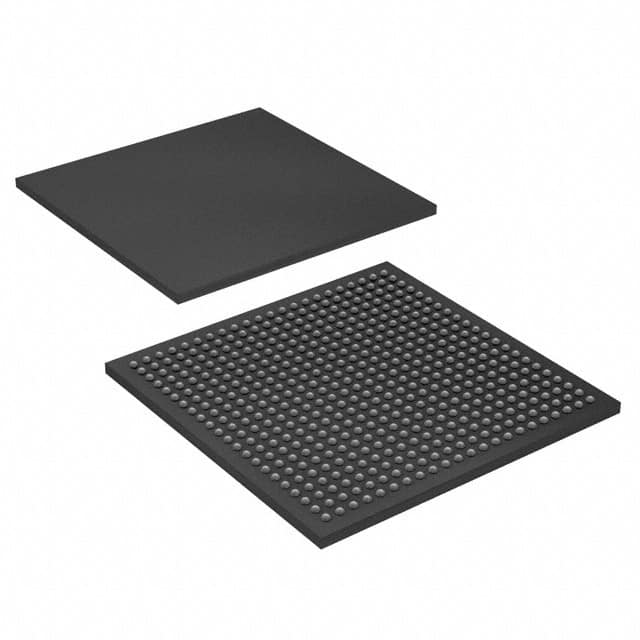Consulte las especificaciones para obtener detalles del producto.

EP4CE40F23C9L
Product Overview
Category
EP4CE40F23C9L belongs to the category of Field-Programmable Gate Arrays (FPGAs).
Use
This FPGA is commonly used in various electronic applications that require high-performance digital logic circuits.
Characteristics
- EP4CE40F23C9L offers a high level of integration, allowing for complex digital designs.
- It provides reconfigurability, enabling users to modify the functionality of the device even after it has been manufactured.
- The FPGA supports a wide range of input/output (I/O) standards, making it versatile for different applications.
- It offers low power consumption, making it suitable for battery-powered devices.
- The device operates at high speeds, facilitating rapid data processing.
Package and Quantity
EP4CE40F23C9L is available in a compact package, typically a plastic quad flat pack (PQFP). The quantity per package varies depending on the supplier and customer requirements.
Specifications
- Logic Elements: 39,600
- Embedded Memory: 1,638 Kbits
- Maximum User I/Os: 346
- Maximum User I/O Pins: 260
- Clock Networks: 8
- PLLs: 4
- Maximum Operating Frequency: 400 MHz
- Supply Voltage: 1.2V
Pin Configuration
The EP4CE40F23C9L FPGA has a total of 346 user I/O pins. The pin configuration is as follows:
- Pin 1: GND
- Pin 2: VCCIO0
- Pin 3: IOL1N0
- Pin 4: IOL1P0
- ...
- Pin 345: IOL34N17
- Pin 346: IOL34P17
For a detailed pin configuration diagram, please refer to the manufacturer's datasheet.
Functional Features
EP4CE40F23C9L offers several functional features that enhance its usability:
- High-Speed Data Processing: The FPGA operates at a maximum frequency of 400 MHz, enabling rapid data processing and real-time applications.
- Reconfigurability: Users can modify the device's functionality by reprogramming it, allowing for flexibility in design iterations.
- Embedded Memory: The FPGA includes 1,638 Kbits of embedded memory, facilitating efficient storage and retrieval of data.
- Versatile I/O Standards: The device supports various I/O standards, such as LVCMOS, LVTTL, and SSTL, making it compatible with different interface requirements.
- Clock Management: EP4CE40F23C9L incorporates eight clock networks and four phase-locked loops (PLLs), enabling precise timing control.
Advantages and Disadvantages
Advantages
- High integration level allows for complex designs.
- Reconfigurability enables flexibility in design modifications.
- Low power consumption makes it suitable for battery-powered devices.
- Versatile I/O standards provide compatibility with different interfaces.
- High-speed data processing facilitates real-time applications.
Disadvantages
- Steep learning curve for beginners due to the complexity of FPGA programming.
- Limited availability of alternative models from other manufacturers.
- Higher cost compared to traditional fixed-function integrated circuits.
Working Principles
EP4CE40F23C9L is based on the principle of configurable logic. It consists of an array of programmable logic elements interconnected through configurable routing resources. These logic elements can be programmed to implement desired digital functions using hardware description languages (HDL) or schematic entry tools. The configuration data is stored in non-volatile memory cells within the FPGA, allowing the device to retain its programmed functionality even after power is removed.
Application Field Plans
EP4CE40F23C9L finds applications in various fields, including:
- Communications: Used in wireless base stations, network routers, and data communication equipment.
- Industrial Automation: Employed in programmable logic controllers (PLCs), motor control systems, and robotics.
- Automotive: Integrated into automotive electronics for functions like advanced driver-assistance systems (ADAS) and infotainment systems.
- Aerospace and Defense: Utilized in radar systems, avionics, and military communication equipment.
- Medical Devices: Incorporated into medical imaging systems, patient monitoring devices, and laboratory equipment.
Alternative Models
While EP4CE40F23C9L is a popular FPGA model, there are alternative models available from other manufacturers that offer similar functionality. Some notable alternatives include:
- Xilinx Spartan-6 XC6SLX45
- Altera Cyclone IV EP4CE30F23C7
- Lattice Semiconductor iCE40HX8K
These alternative models provide comparable features and can be considered based on specific project requirements.
In conclusion
Enumere 10 preguntas y respuestas comunes relacionadas con la aplicación de EP4CE40F23C9L en soluciones técnicas
Sure! Here are 10 common questions and answers related to the application of EP4CE40F23C9L in technical solutions:
Q: What is EP4CE40F23C9L? A: EP4CE40F23C9L is a field-programmable gate array (FPGA) manufactured by Intel (formerly Altera). It offers a range of programmable logic elements and embedded memory blocks.
Q: What are the key features of EP4CE40F23C9L? A: Some key features include 39,600 logic elements, 1,288 embedded memory blocks, 266 multipliers, and support for various I/O standards.
Q: What applications can EP4CE40F23C9L be used for? A: EP4CE40F23C9L can be used in a wide range of applications such as digital signal processing, industrial automation, robotics, telecommunications, and high-performance computing.
Q: How do I program EP4CE40F23C9L? A: EP4CE40F23C9L can be programmed using hardware description languages (HDLs) like VHDL or Verilog, which are then synthesized and implemented using design software like Quartus Prime.
Q: Can EP4CE40F23C9L interface with other components or devices? A: Yes, EP4CE40F23C9L supports various communication protocols like UART, SPI, I2C, and Ethernet, allowing it to interface with other components or devices in a system.
Q: What is the maximum operating frequency of EP4CE40F23C9L? A: The maximum operating frequency of EP4CE40F23C9L depends on the design and implementation, but it can typically achieve frequencies in the range of several hundred megahertz.
Q: Does EP4CE40F23C9L have any built-in security features? A: Yes, EP4CE40F23C9L provides security features like bitstream encryption, design separation, and tamper detection to protect against unauthorized access or intellectual property theft.
Q: Can EP4CE40F23C9L be reprogrammed multiple times? A: Yes, EP4CE40F23C9L is a reprogrammable FPGA, allowing you to modify and reconfigure its functionality multiple times during development or in the field.
Q: What power supply requirements does EP4CE40F23C9L have? A: EP4CE40F23C9L requires a single 3.3V power supply for core operation, along with additional voltages for I/O banks and configuration pins.
Q: Are there any development boards available for EP4CE40F23C9L? A: Yes, Intel offers development boards like the DE0-Nano-SoC or Terasic's Cyclone IV GX Starter Kit, which provide a platform for prototyping and testing designs using EP4CE40F23C9L.
Please note that the specific details and answers may vary depending on the context and requirements of your technical solution.

